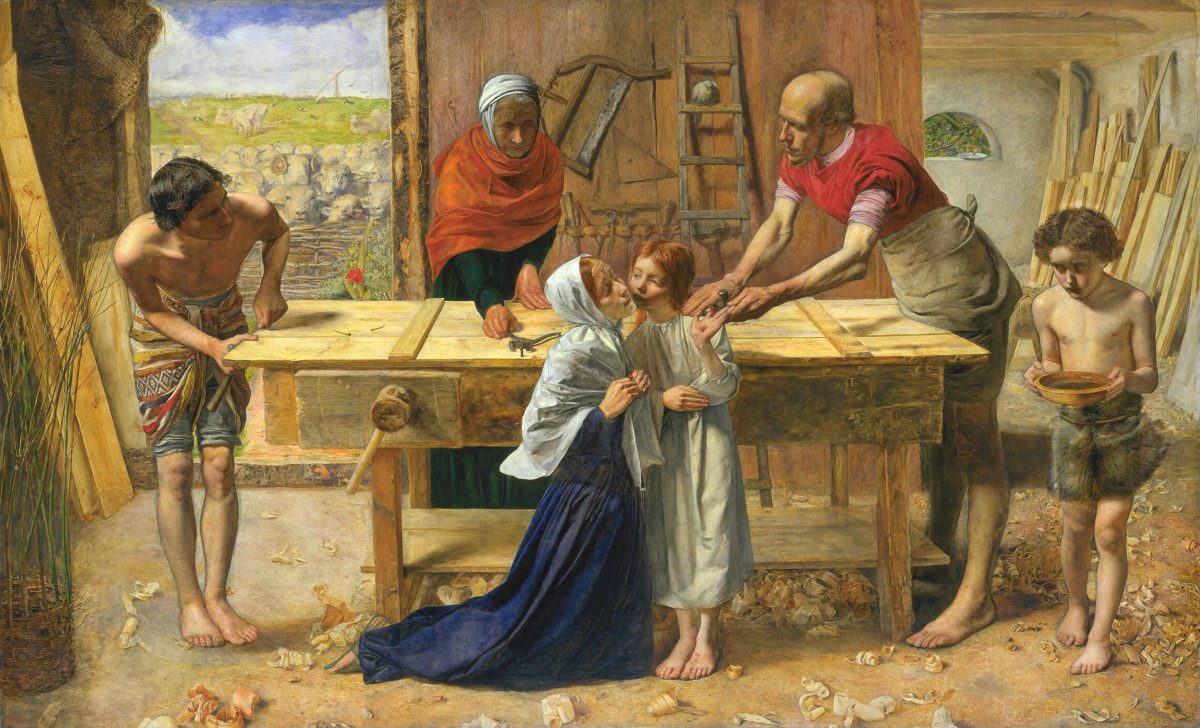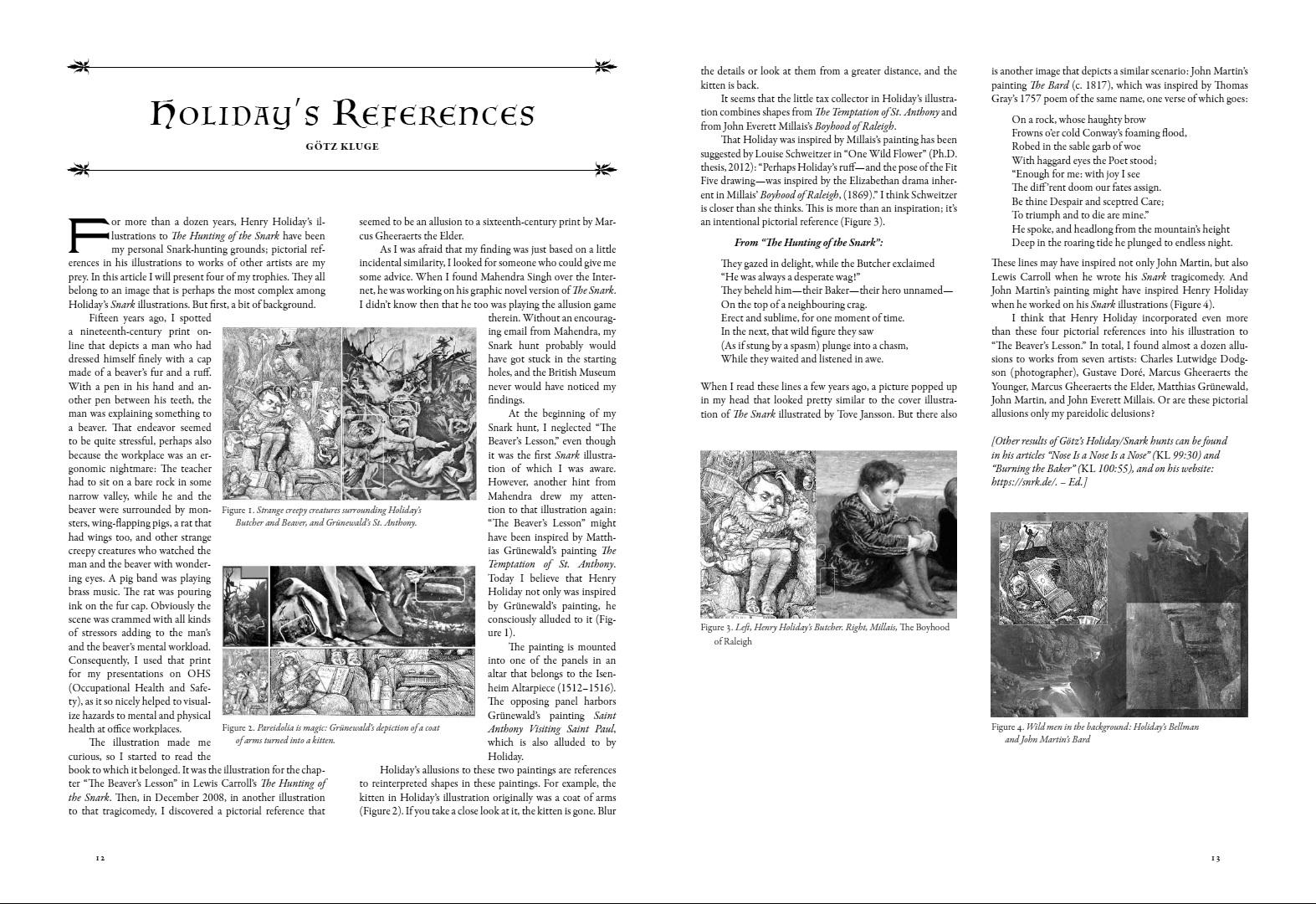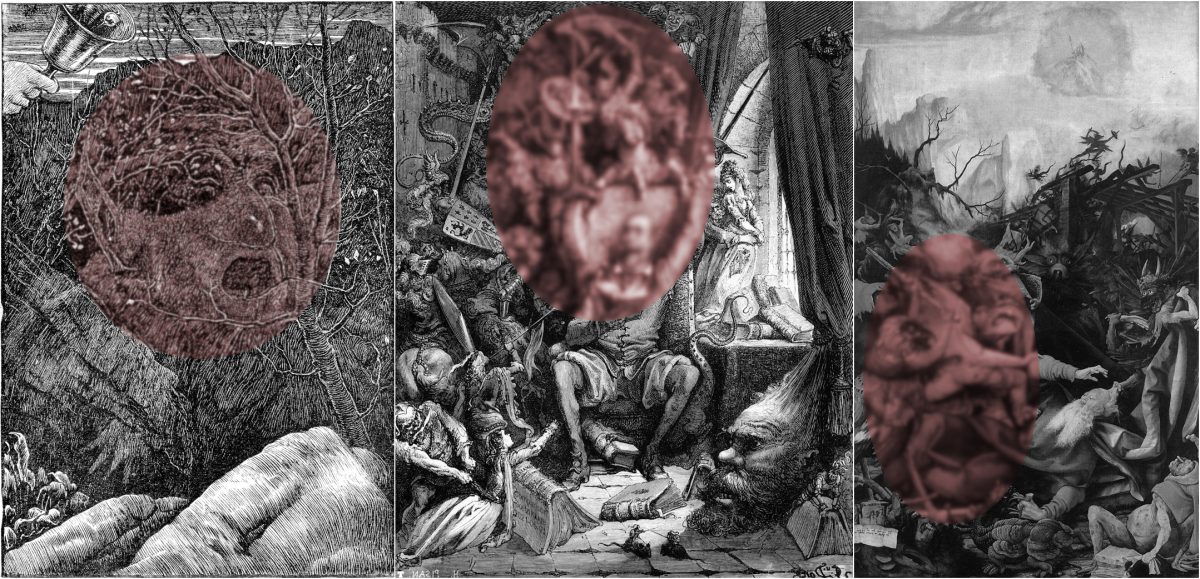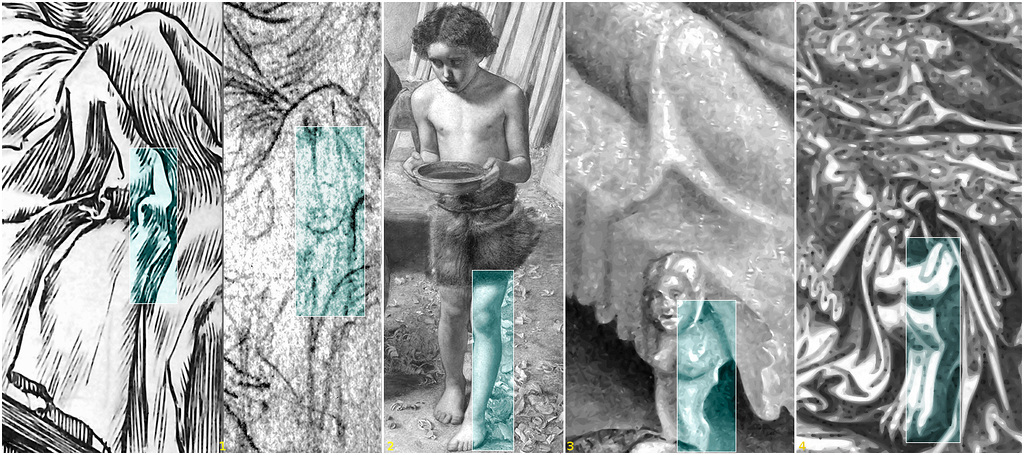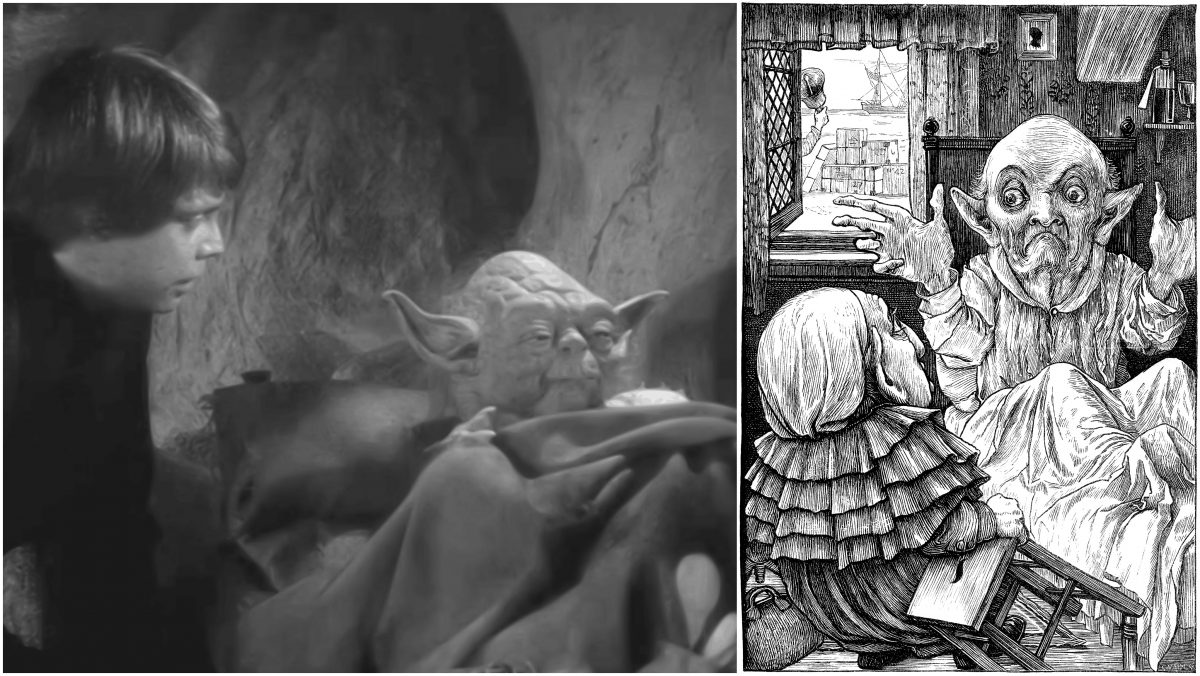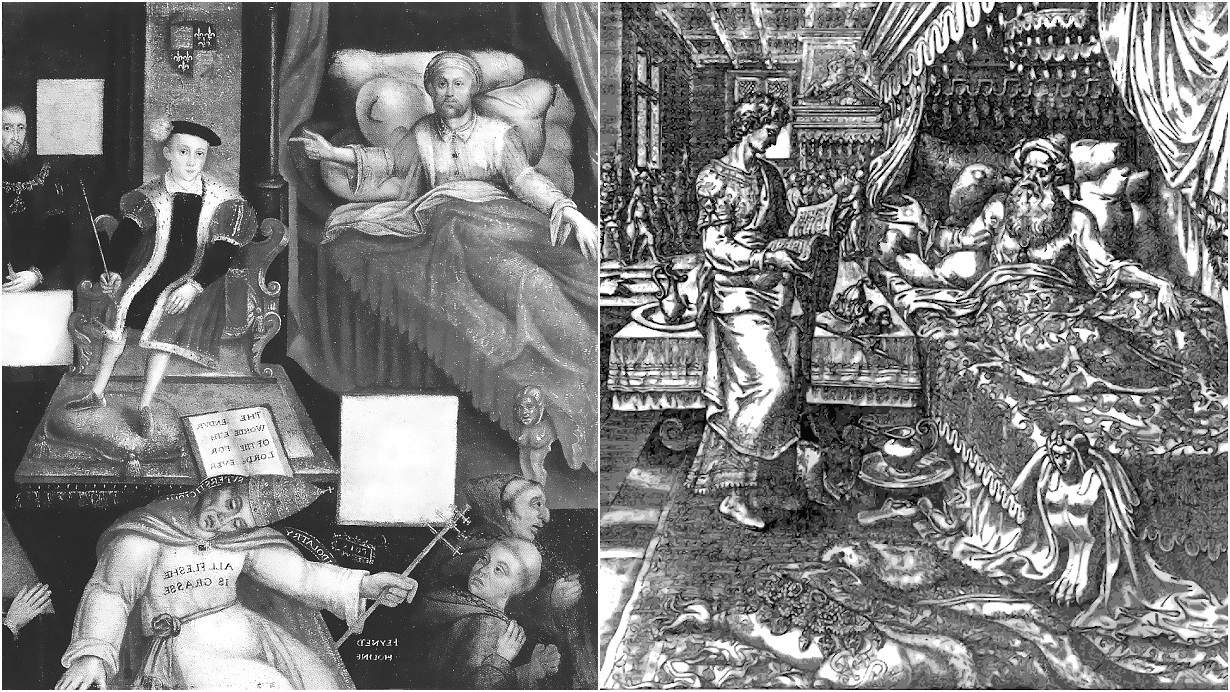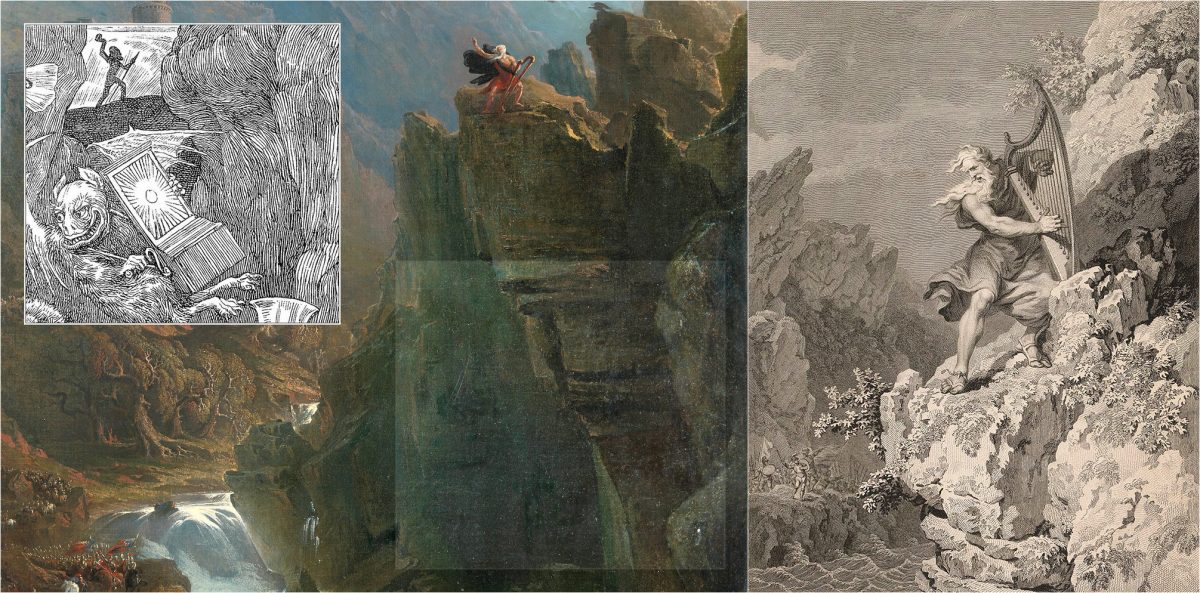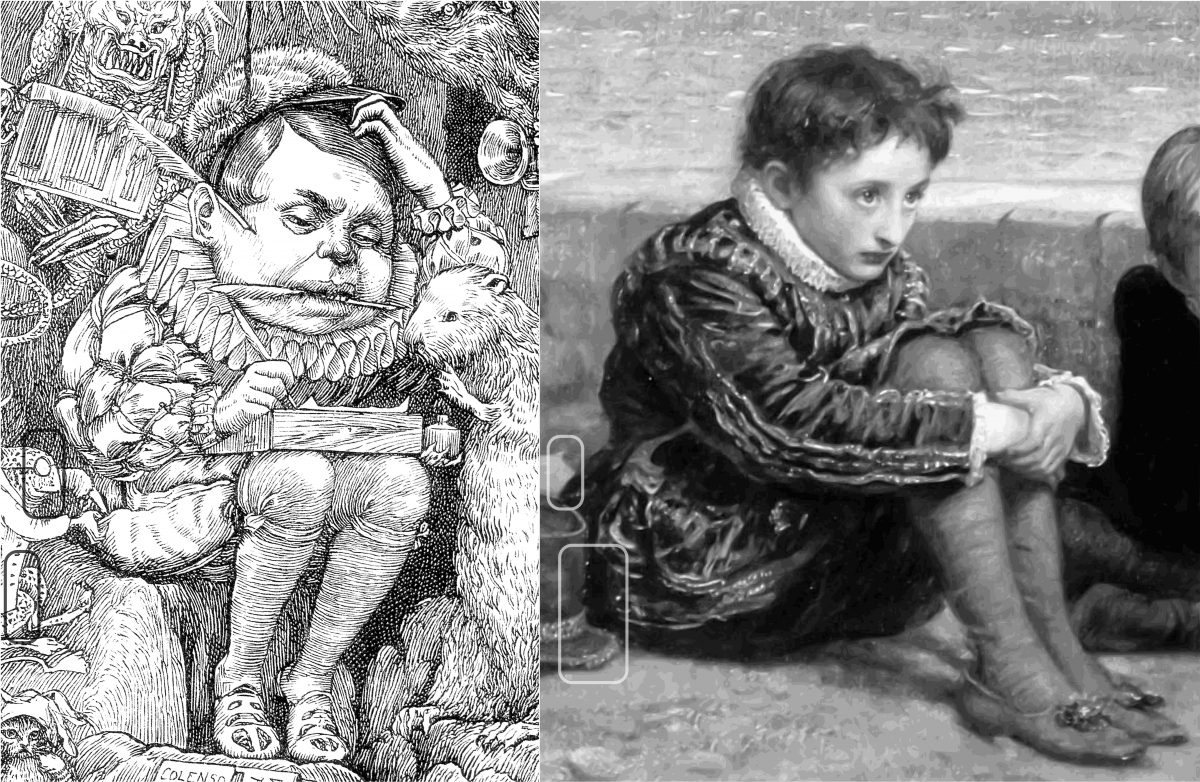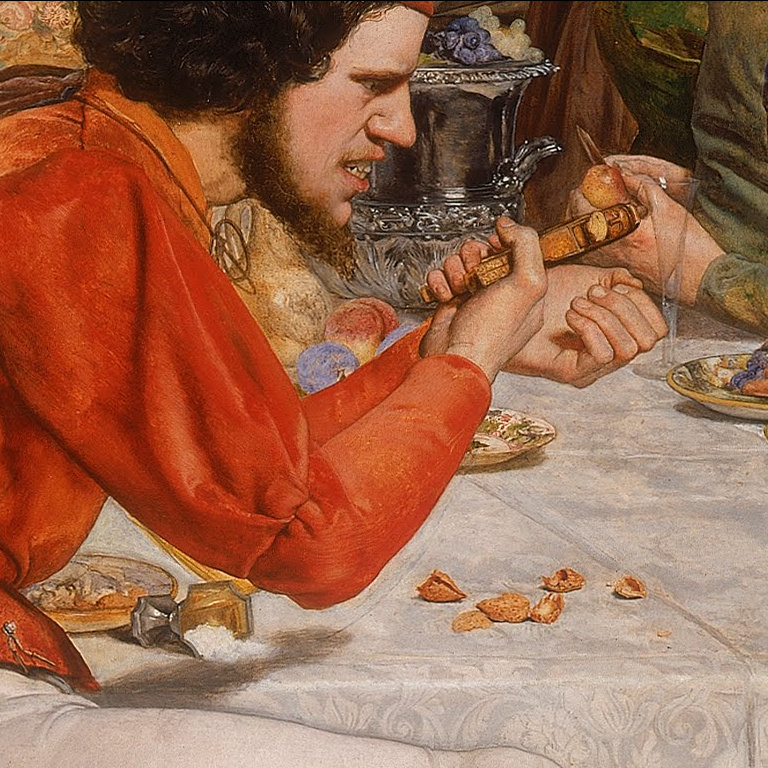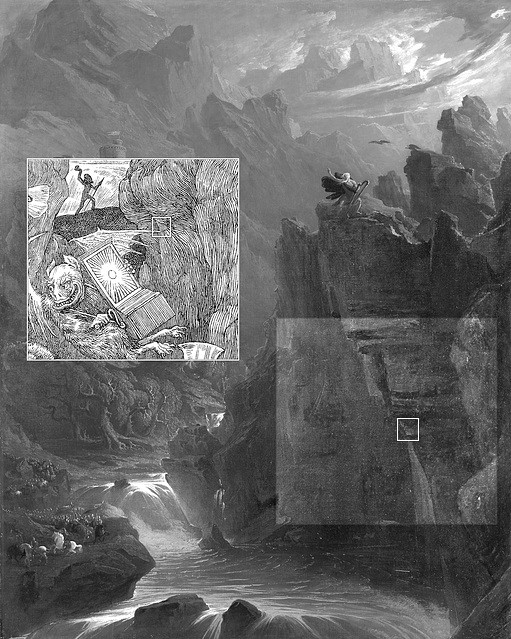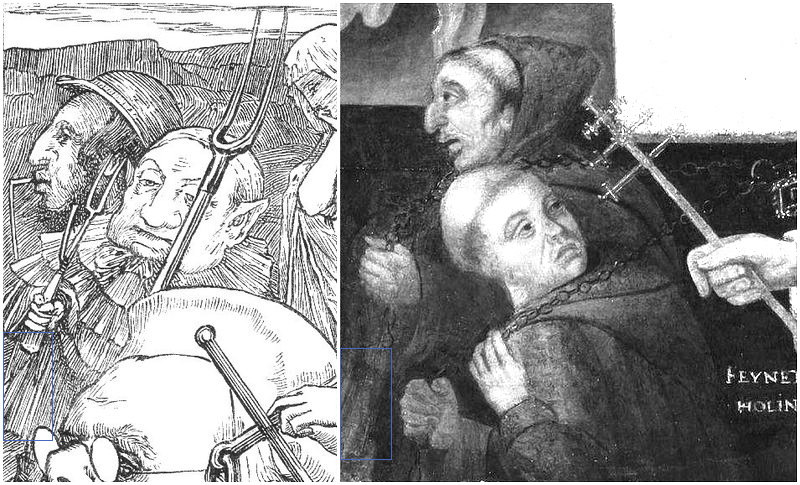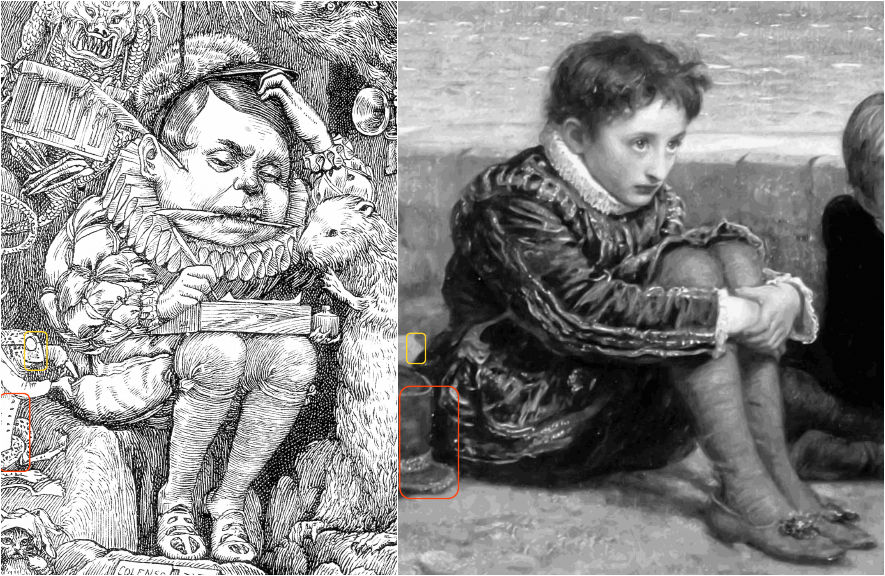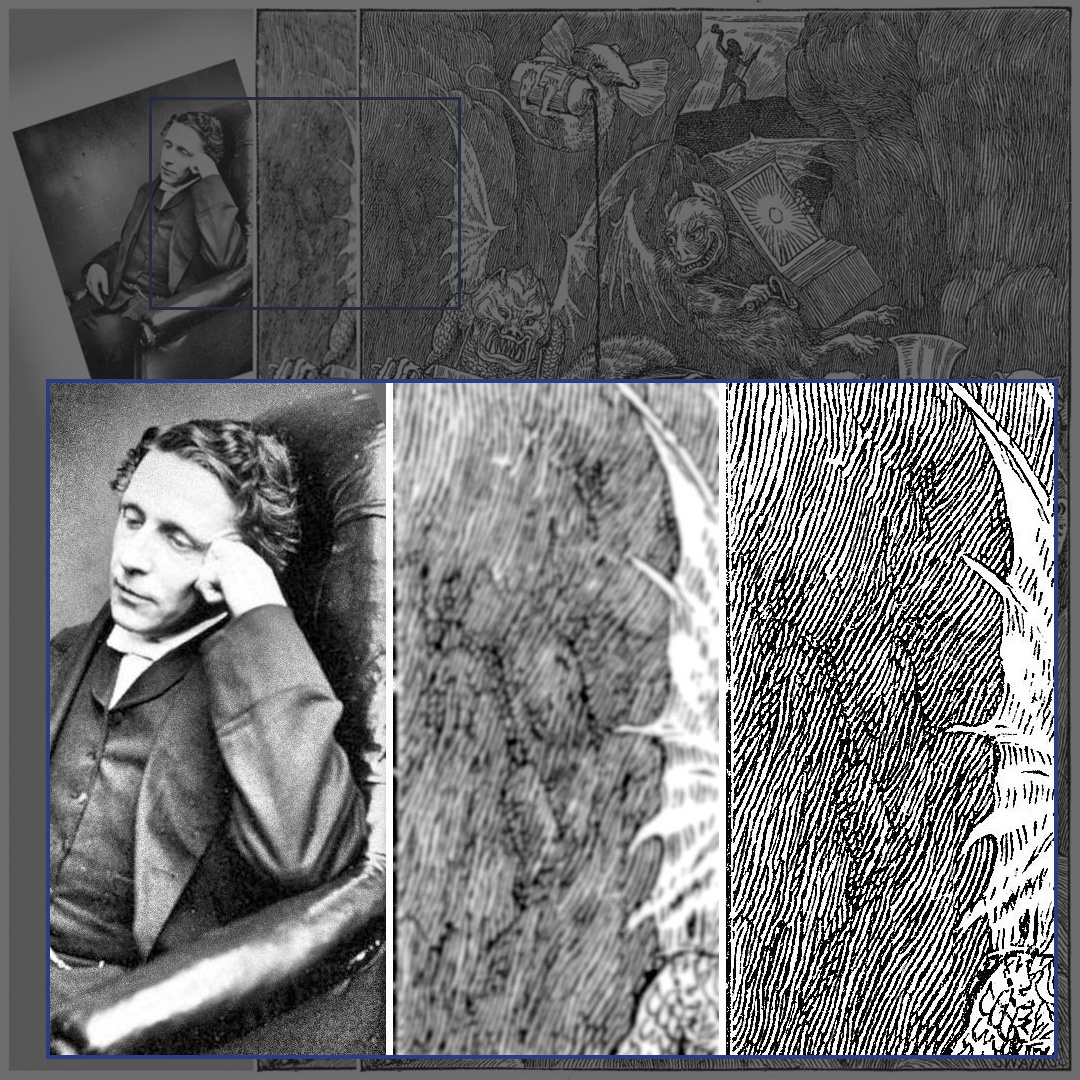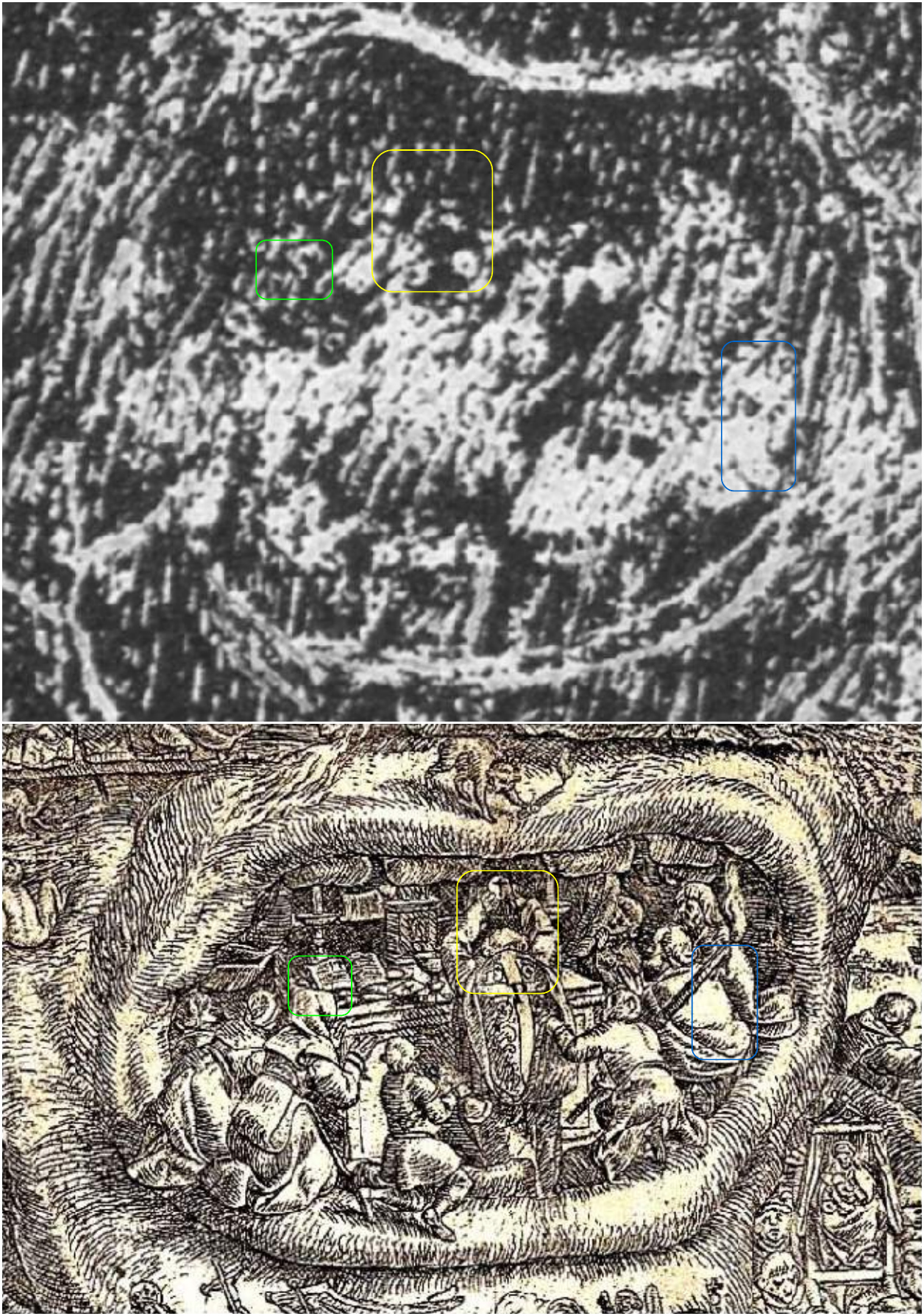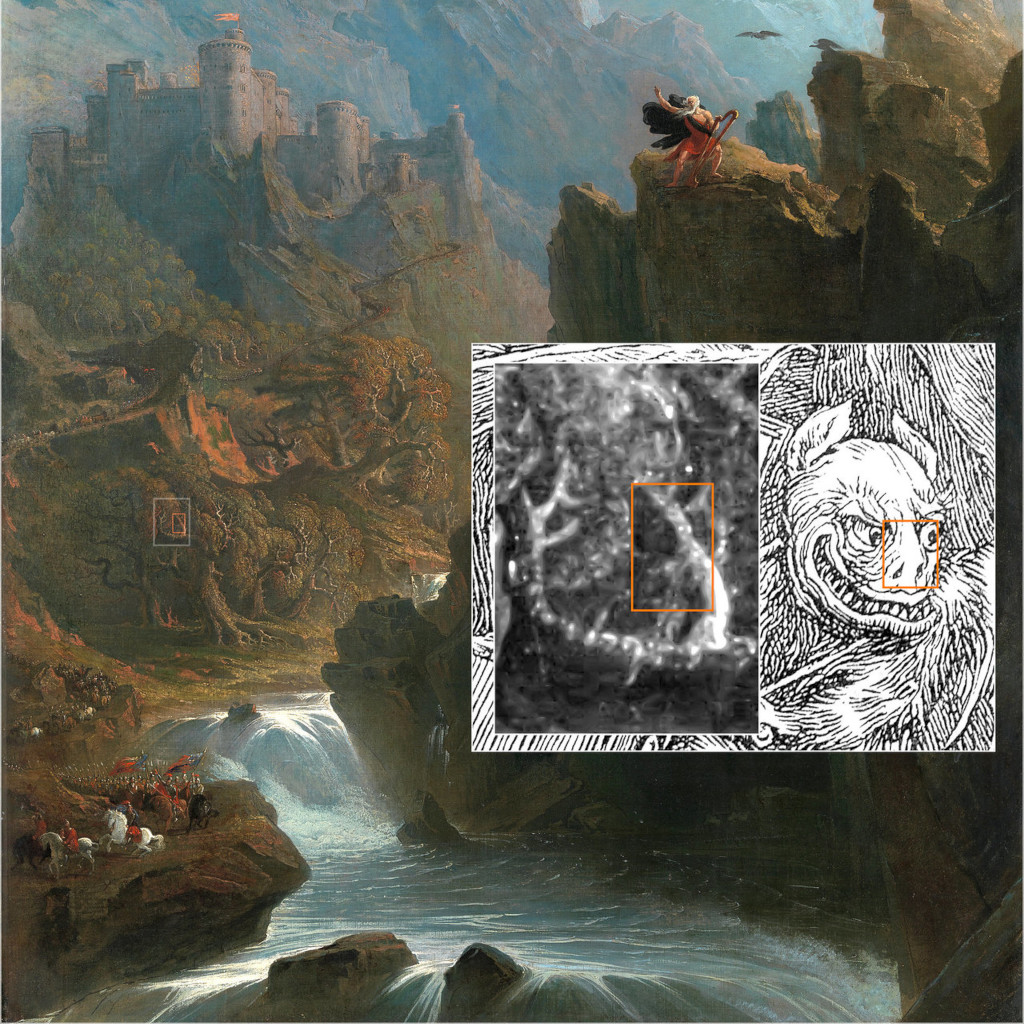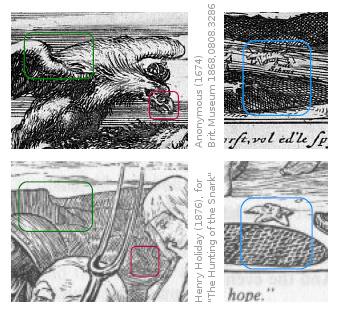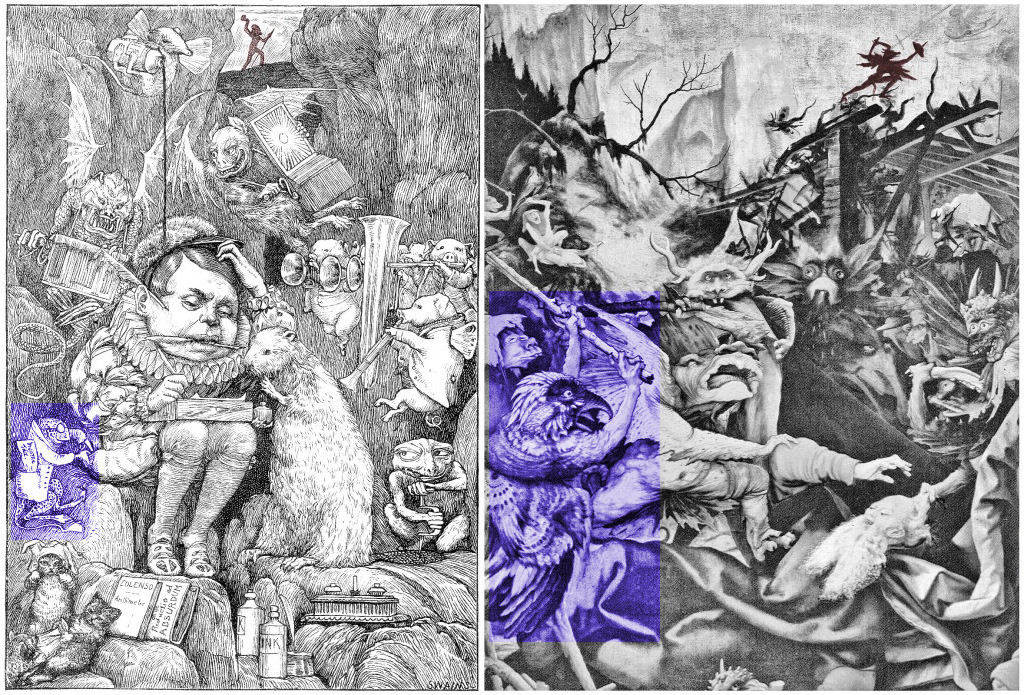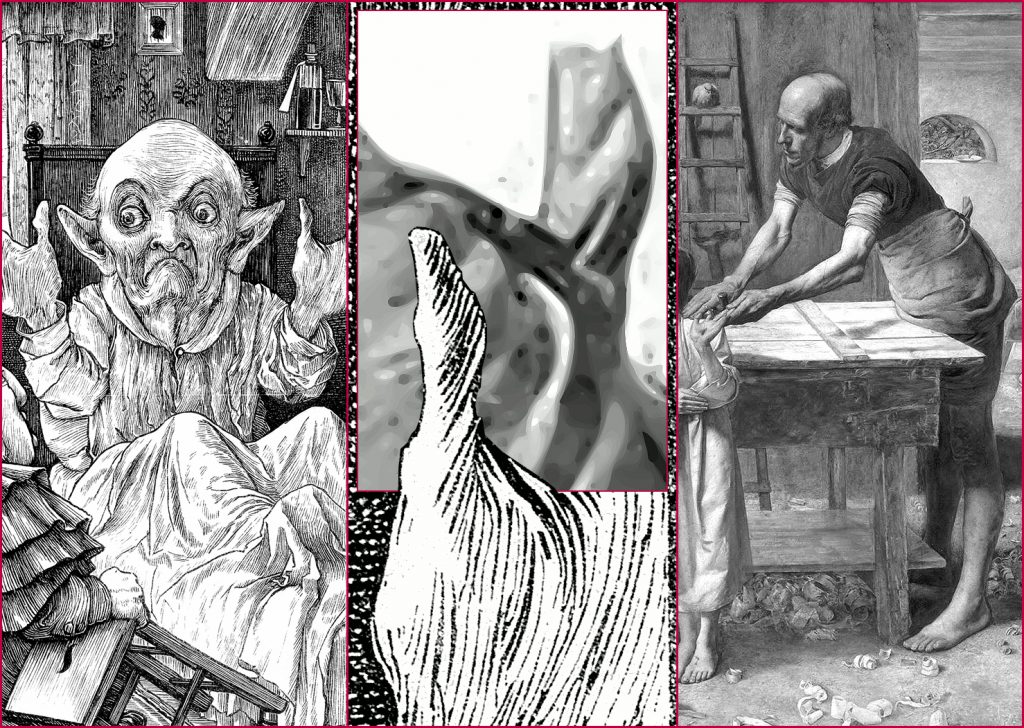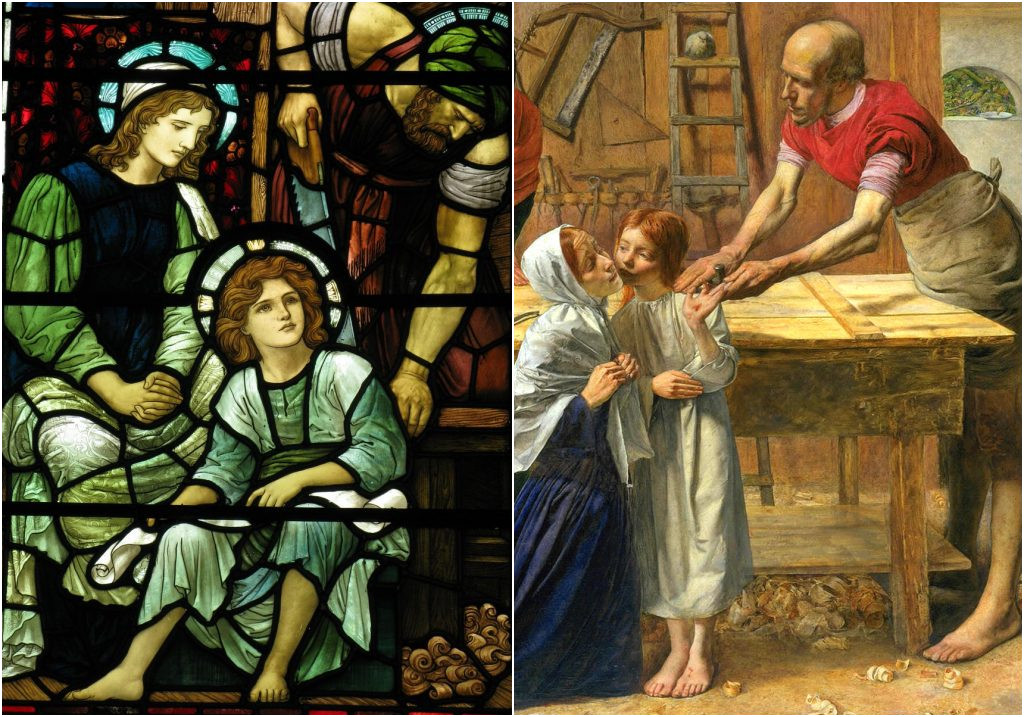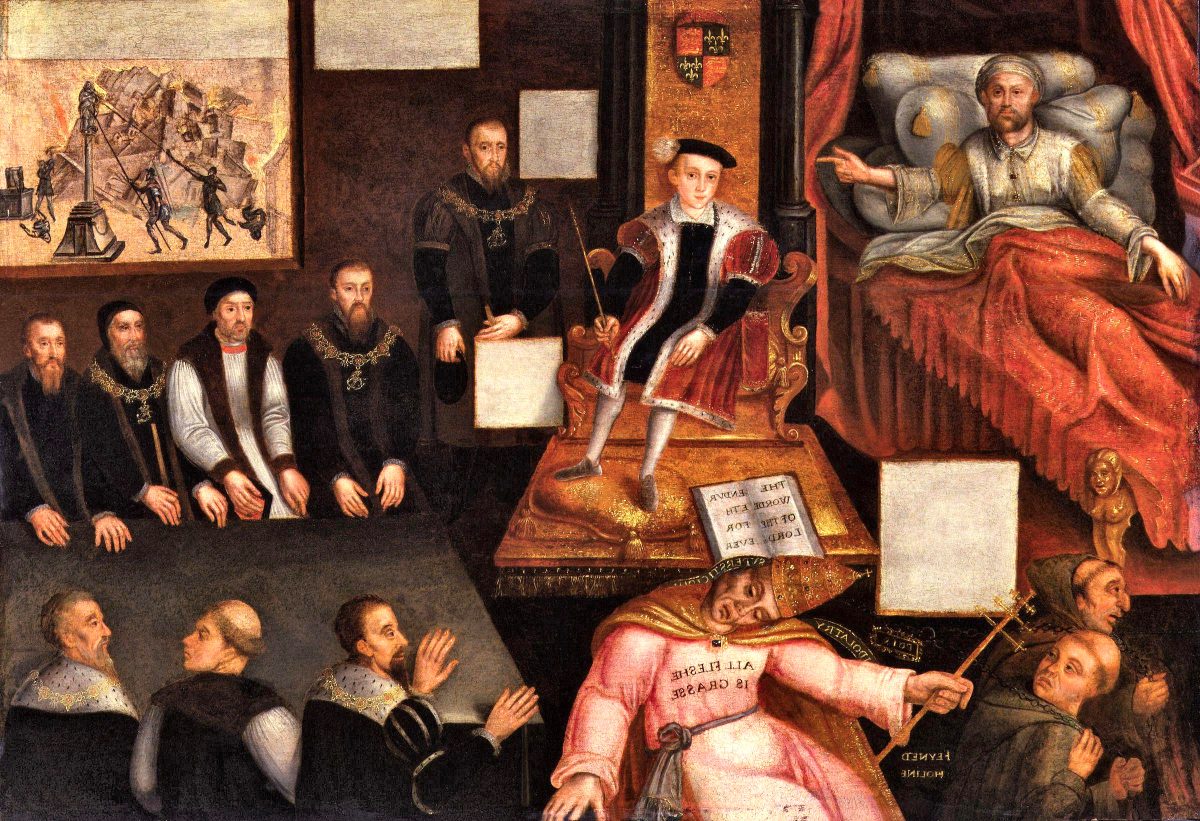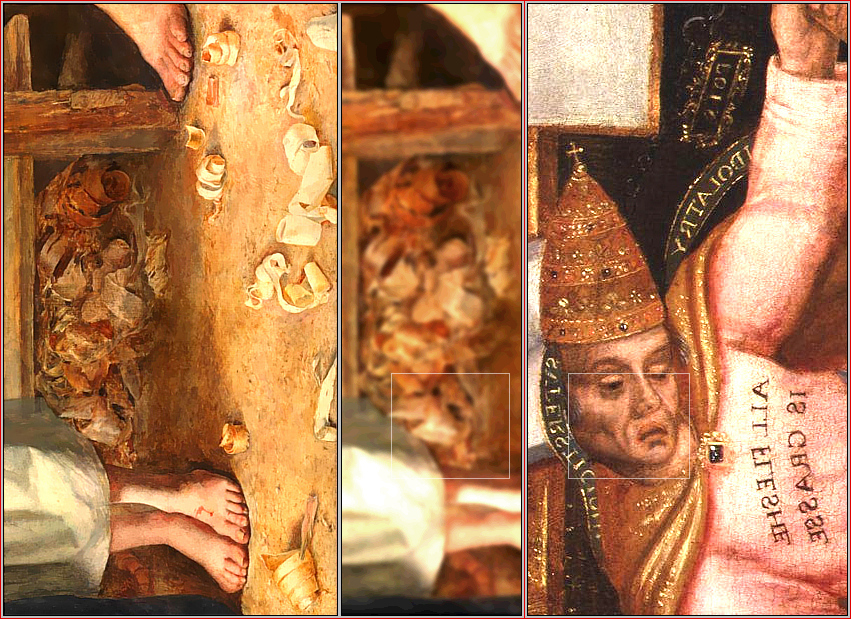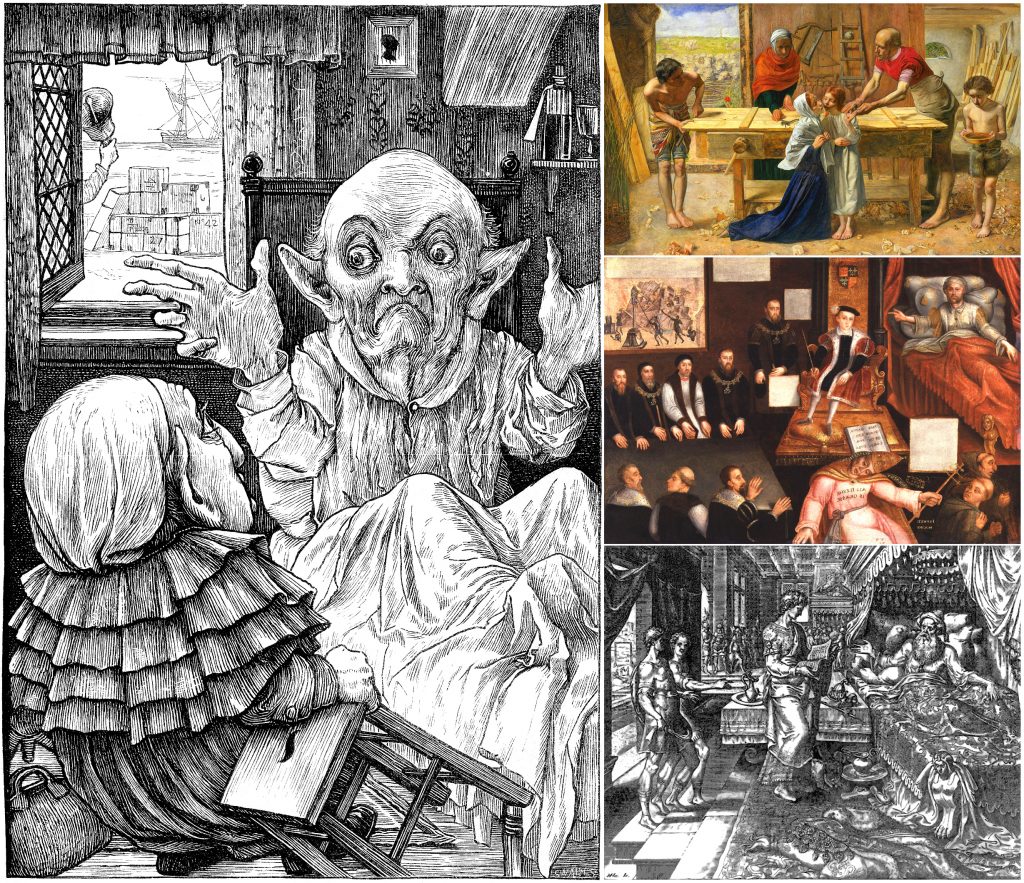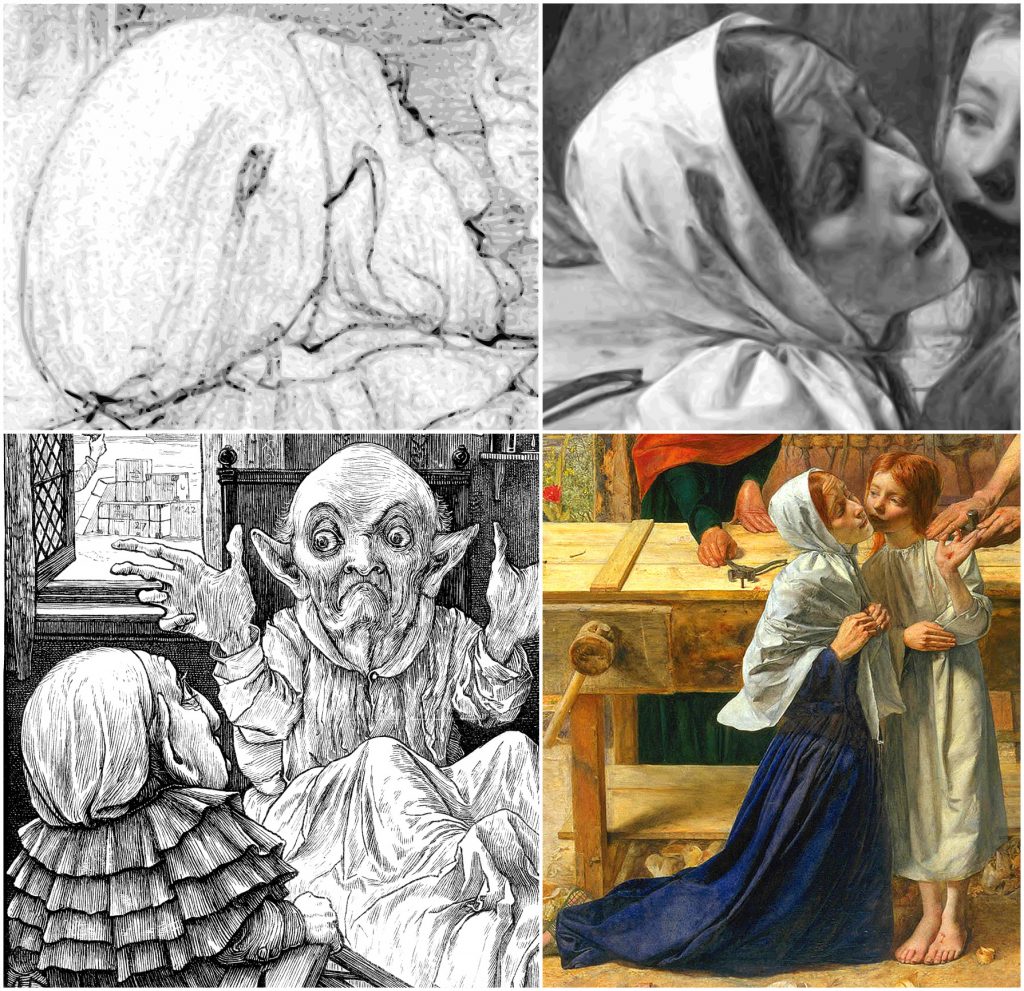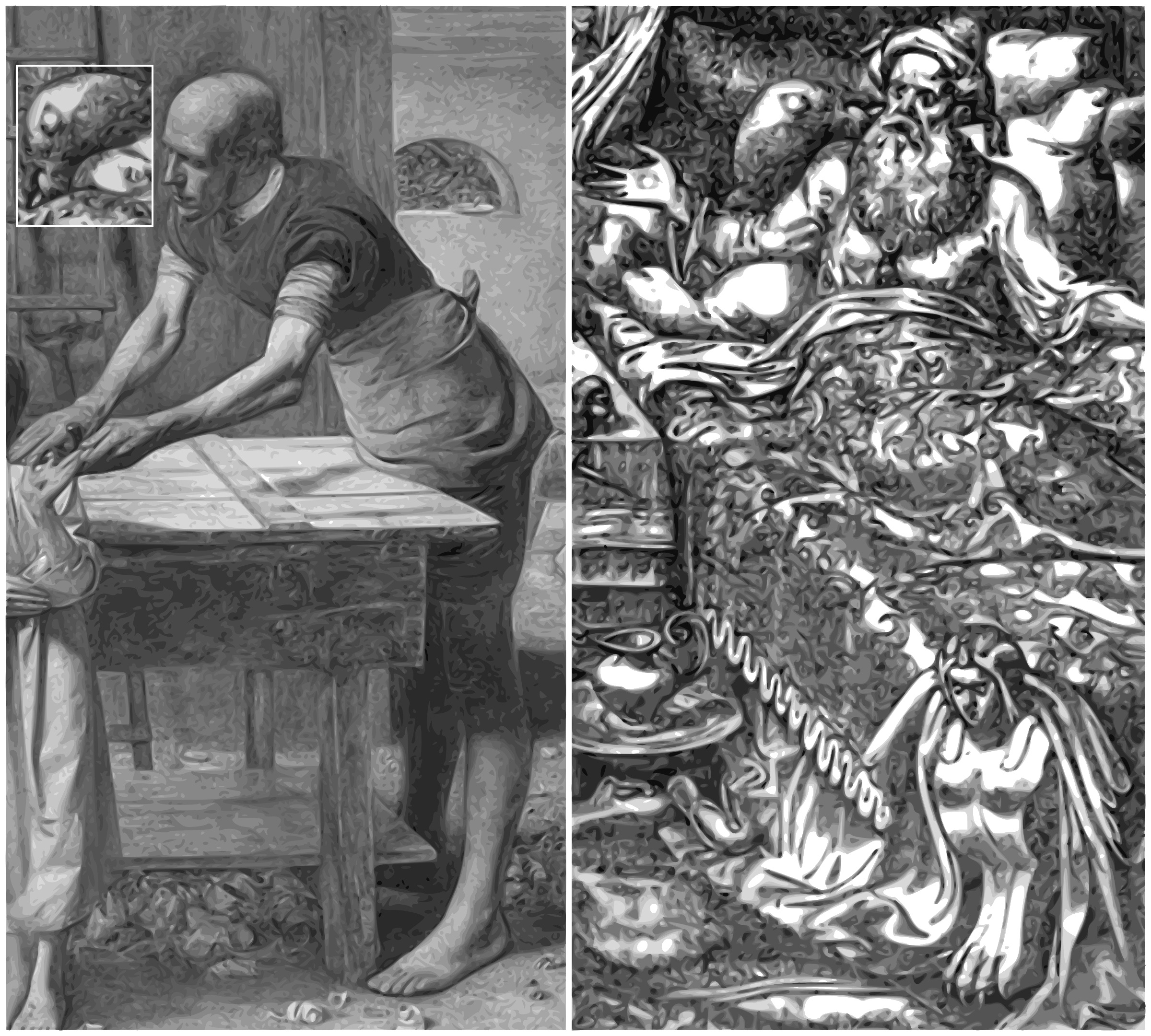Jun 13, 1862: Saw Millais’ “Carpenter’s Shop” at Ryman’s. It is certainly full of power, but hideously ugly: the faces of the Virgin and Christ being about the ugliest.
I found this quote in Lewis Carroll’s Diaries on Twitter.
And I found the following quote from Charles Dickens in Pre-Raphernalia, Raine Szramski‘s blog with “Pre-Raph Sketchbook Cartoons”.
You behold the interior of a carpenter’s shop. In the foreground of that carpenter’s shop is a hideous, wry-necked, blubbering, red-headed boy, in a bed-gown, who appears to have received a poke in the hand, from the stick of another boy with whom he has been playing in an adjacent gutter, and to be holding it up for the contemplation of a kneeling woman, so horrible in her ugliness, that (supposing it were possible for any human creature to exist for a moment with that dislocated throat) she would stand out from the rest of the company as a Monster, in the vilest cabaret in France, or the lowest ginshop in England.
Two almost naked carpenters, master and journeyman, worthy companions of this agreeable female, are working at their trade; a boy, with some small flavor of humanity in him, is entering with a vessel of water; and nobody is paying any attention to a snuffy old woman who seems to have mistaken that shop for the tobacconist’s next door, and to be hopelessly waiting at the counter to be served with half an ounce of her favourite mixture. Wherever it is possible to express ugliness of feature, limb, or attitude, you have it expressed. Such men as the carpenters might be undressed in any hospital where dirty drunkards, in a high state of varicose veins, are received. Their very toes have walked out of Saint Giles’s.
Perhaps Dickens initially saw the reproduction of Millais’ painting in the Illustrated London News (1850-05-11) and couldn’t forget that first impression. It seems that the engraver of the reproduction was a bit biased against Millais’ Carpenter’s Shop. (Twitter | Mastodon)

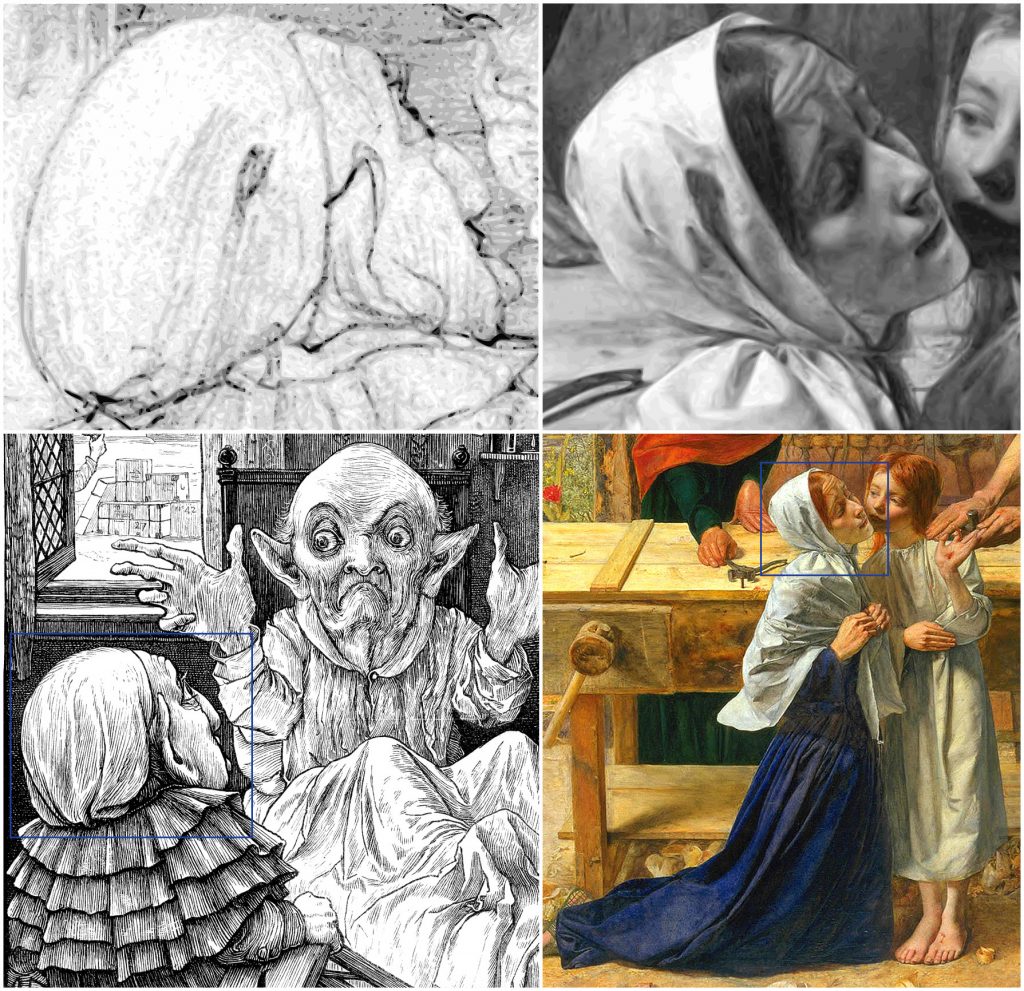 Whether ugly or not, Henry Holiday probably liked the painting of his teacher. He might have alluded to Millais’s Christ in the House of His Parents when he illustrated Lewis Carroll’s The Hunting of the Snark.
Whether ugly or not, Henry Holiday probably liked the painting of his teacher. He might have alluded to Millais’s Christ in the House of His Parents when he illustrated Lewis Carroll’s The Hunting of the Snark.
Category: Christ in the House of his Parents
2019-06-14, update: 2022-12-29

